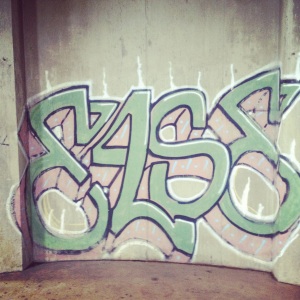By Griffin Jones
In last week’s post, Buffalo filmmaker, David Jackson, made the distinction between what Buffalo means to people who want to create art, vs people who want to make a living from it. The demolition of the 5 Pointz warehouse in Long Island City, Queens, is the latest example of how other cities are increasingly unaccommodating to people who want to create art.
The people who spray painted the 5 Pointz Warehouse weren’t paid to do it. They wanted to create something of their own. The owners of the building have every right to tear it down, they own it. But it doesn’t serve the market of people who want something other than “bland, boring towers of boxes and glass.” This is where we offer our condolences.
Dear New York City artists,
We’re sorry to hear about your loss. We’ve read over and over again about the confiscation of your art space. We continually hear that what made your city what it is, has been painted over, torn down, erased. That must be frustrating. It must be incredibly hurtful because New York City is known as the nation’s cultural capital, because of you. Your imagination, daring, curiosity, collaboration, and vision is why everyone wants to live in New York. And now it’s not yours anymore.
Regretfully we cannot offer you a world-class, arts metropolis in its stead. We cannot give you an entertainment economy that allows you to make a career of your craft. We don’t have an influx of millions of people from the world over to sustain your creative process.
We hope we can extend to you, however, a hopeful consolation in this difficult time. What we can offer you is 16,000 vacant lots and abandoned structures. Among them: Victorian houses, factories, warehouses, greenspace, brownspace, grain elevators, churches, hospitals, government housing projects, schools, and a train terminal. We promise to fight you on whatever you propose to do with them, but if you can persuade us with your talent and vision, we’ll find a way to let you win.
Now you may have heard about Buffalo’s rejuvenation over the last five years or so. To be transparent, it is true. Housing values have increased, large-scale developments are under way in our city center, and businesses are starting to venture into blighted neighborhoods. This may sound familiar to you. You may be concerned that you’ll once again be forced to relocate after contributing to your city’s glory.
Don’t get us wrong, we would love that. But it’s unlikely to ever happen. The proposed tower at the 5 Pointz site is taller than our tallest building. There is no nearby Citi Bank Tower to cause rents to go up. We pretend to worry about gentrification, but the truth is, we have no idea what it means. At least, not in the way you do.
Full disclosure, you will not be among the first pioneers. Sorry. An arts festival in Buffalo’s industrial grain elevators with dozens of artists and over 12,000 attendees is entering its third year. Two micro-breweries already operate out of old commercial space, and two more are opening now. A small business incubator, serving New York’s largest refugee community, Thai, Peruvian, Burmese, and Ethiopian restaurant kiosks opened in the last year. There are now more than half a dozen urban farms and dozens of community gardens.
But this is just the tip of the iceberg that you’re used to. We cannot offer you the brilliant masterpiece that you once saw in New York. Neither can they. All we can offer you is a space to use your bravery, insight, creativity, and boldness to challenge the status quo.
Again, we are deeply sorry for your loss. New York was completely unlike anywhere in the world because of you. We hope we can give you a chance to make something completely unlike New York.
Keeping you always in our thoughts,
Buffalo
P.S. In the nearly impossible event that Buffalo becomes TOO commercially successful…Detroit is only four hours away.

Painting the wall at Silo City.

Looks a bit like 5Pointz actually.

This 1700 sq ft house is on sale for less than 50 grand

Party in the abandoned Central Terminal.






